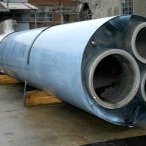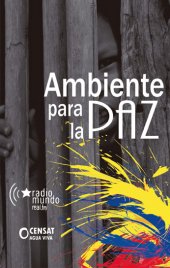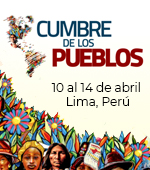
15 de diciembre de 2009 | Informes especiales | Justicia climática y energía
Uncertain Development Mechanisms
A look into CDM in Uruguay. The case of Zenda Branaa Tannery
length: 08:24 minutes
Descargar: MP3 (3.8 MB)
The concern over climate change has grown in the past years, becoming one of the main concerns faced by the society worldwide. Different proposals have been put forward to try to mitigate this phemonenon, both by the governments and by the international agencies, grassroots organizations and social movements.
Since the signing of the Kyoto Protocol aimed at reducing greenhouse gas emissions under the United Nations Framemork Convention on Climate Change, three market mechanisms put forward to reduce emissions that cause climate change, were included. To wit: carbon trading, joint implementation and clean development mechanisms (CDM). In this report we will address the latter through the study of a specific case.
According to the United Nations, CDM entail implementing projects of emissions reduction or elimination in developed countries to earn credits- equivalent to a ton of carbon dioxide – in return for certified reductions.
The UN website explains “These emissions reduction certificates can be commercialized and sold and they can be used by the industrialized countries to reach most of their emissions reduction targets under the Kyoto Protocol”.
Since this mechanism began operating in 2006, there have been over a thousand CDM projects around the world and they are expected to produce emissions reduction certificates worth over 2.7 billion tons of carbon dioxide in the first period of the Kyoto Protocol.
The Uruguayan government adopted this proposal and promoted it at a domestic level, believing that implementing CDM in the South is a way to increase the developed countries’ commitment in terms of climate change.
The CDM project portfolio for Uruguay includes 33 activities, 9 being Documents of Project Desigsn and 8 Notes of Ideas for Projects. They are enterprises that cover a wide range of climate change mitigation options.
The portfolio includes activities of projects representing the sectors with the greatest CDM potential in Uruguay, such as energy, transportation and waste disposal. The 33 activities combined would produce a total of 5.2 million emissions reduction certificates by 2012 and 20 million cerificates for the total credit period of those projects, even though the final number could be even higher.
Almost all the emissions reduction certificates that the selected projects shall produce, will be available to the interested buyers.
CDM in Uruguay: the case of Zenda Branáa Tannery
The Uruguayan transnational corporation Zenda Branáa, with 100 per cent national capital, produces input for the aviation, automotive and furniture industry. It has plants and offices in Argentina, Mexico, US, Germany and South Africa, and it is based in Uruguay.
The corporation was founded in 1890, and it has diversified its production in the recent years, targetting international markets. The tannery has provided leather for cars to companies like BMW, Audi, Ford, Toyota, Mazda, Peugeot, Citröen and Volkswagen, and it also produces four lines of leather for the aeronautical industry. It has continued producing leather for the furniture sector, something which it started in the 80s.
Fifteen years ago, the tannery used to produce 300 leathers a day: nowadays its production ranges from 5 to 6,000 finished leathers a day. 1,200 people work in this process in Uruguay, and over 650 in its plants, commercial offices and warehouses in Argentina, Germany, South Africa, Mexico and the US. In 2006, it billed 140 million dollars.
The project in detail
The project consists in the installation of a co-generator and two backup kettles that operate on natural gas. The goal is to develop the industrial activity more efficiently and with a cleaner fuel than fuel oil.
According to the Project Design Document, the co-generation is a clear measure of energy efficiency because it implies generating two forms of secondary energies: electricity and heat from a single primary source of energy, natural gas, thus increasing the global yield of the process. Thermal energy production meets the needs of the plant, its growth, and in case of having surplus energy it could be sold to neighboring industries that use fuel oil. Meanwhile, electric energy is delivered entirely to the national network.
According to the corporation, the co-generator operation reduces carbon dioxide emissions thanks to the improvement in efficiency as a result of the simultaneous production of electricity and thermal energy from a single primary fuel: natural gas. This fuel, as any other fuel, produces carbon dioxide, but its emissions are lower than those caused by fuel oil or gas oil.
It also aims to constribute energy to the country’s electricity supply, which is public and it is based on hydraulic energy, supported on thermal generation from fuel oil and gas oil. Zenda’s would be the first private initiative of electric energy generation and the first generating unit from natural gas, according to the company.
The fact that electric energy is generated privately is very significant: this is possible thanks to an Uruguayan law known as the Energy Regulation Framework, which met the left wing and trade unions’ opposition when it was passed in Parliament a few years ago, for considering it a form of privatization of the public energy service. In fact, enterprises like Zenda’s are a form of privatization.
The company claims that the total amount of emissions reduction certificates expected throughout the 21 years of the credit period (from January 2008 to December 2028) amounts to 207,156 tons of carbon dioxide.
However, despite Zenda’s efforts in terms of emissions reduction through CDM, it has been observed for its environmental behavior in other areas.
The company was fined by Montevideo’s town hall for breaking regulations on the management of industrual waste water. Also, the town authorities had demanded Zenda to withdraw the solid waste it had dumped into a field close to the tannery, so the town hall fined the company once again.
False solutions
Regardless of the company’s actions, the problem lies in the conception of CDM. It is a false solution to climate change and for this reason these mechanisms are not a serious alternative.
Ultimately, they are carbon offsetting mechanisms for developed countries, and not ways to reduce polluting emissions. It is a mechanism used by the developed countries to invest in the countries of the South and buy their right to continue polluting locally, thus avoiding all domestic emissions reduction obligations they committed to under the Kyoto Protocol.








